PostgreSQL, often simply called Postgres, is more than just another database engine. It’s a powerful, open-source system known for its reliability, flexibility, and strong community support.
Lightweight web applications and large enterprise systems alike benefit from Postgres’s powerful performance. Best of all, it can be deployed across a variety of environments, from AWS and Azure to streamlined platforms like PipeOps.
In this article, we’ll explore what makes Postgres so powerful and show you how to get it up and running across the cloud platforms developers trust most.
Packed with advanced features and real-world advantages, Postgres continues to stand out as a top choice in modern database management. Let’s take a closer look at what makes it so exceptional.
Why Choose Postgres?
PostgreSQL stands out as a powerful database choice for many reasons:
Free & Open Source: Postgres is fully open source with no licensing fees, making it an excellent option for projects of any scale. This freedom allows businesses to avoid vendor lock-in and maintain full control over their data infrastructure.
Feature-Rich: Postgres natively supports a wide array of advanced features, including complex SQL queries with joins, window functions, and common table expressions (CTEs). It also offers full-text search capabilities, triggers, stored procedures, and support for custom data types and extensions. Beyond relational data, Postgres supports non-relational data types such as JSON/JSONB for efficient JSON storage and querying, geospatial data through the popular PostGIS extension, arrays, hstore (key-value pairs), and range types.
Flexible Data Types: Postgres accommodates diverse data requirements with native support for arrays, JSON/JSONB, geometric types, and even user-defined types, making it adaptable across numerous use cases.
Scalable & Reliable: Postgres scales well vertically by utilizing more CPU and memory and offers horizontal scaling through replication and table partitioning. It supports synchronous and asynchronous replication, and high-availability setups can be managed using tools like Patroni and connection poolers like PgBouncer. Built with reliability in mind, Postgres uses Multi-Version Concurrency Control (MVCC) for consistent transactions, write-ahead logging (WAL) for crash recovery, and supports point-in-time recovery (PITR) to restore databases to a specific state.
Cross-Platform & Extensible: Postgres runs seamlessly on major operating systems including Linux, macOS, and Windows, and can be deployed on cloud platforms such as AWS and Azure. It integrates smoothly with containerization and orchestration tools like Docker and Kubernetes. Additionally, it has first-class support in popular Object-Relational Mappers (ORMs) such as Sequelize, Prisma, and SQLAlchemy, making it accessible to developers across many languages and frameworks.
Active Community & Support: Postgres benefits from a large and active global community that contributes to extensive documentation, plugins, and third-party tools. For enterprise-grade deployments, commercial support and consulting services are available through several vendors.
How to Set Up Postgres
You can set up Postgres in several ways depending on your needs. For local development, download the official Postgres installer for Windows, macOS, or Linux from the PostgreSQL website. Once installed, you can manage your databases via the command-line interface (CLI) or use graphical tools like pgAdmin.
If you prefer a hassle-free solution, platforms like AWS, Azure, and PipeOps let you deploy fully managed Postgres instances with just a few clicks, no manual setup required.
Deploying PostgreSQL on AWS
Amazon RDS (Relational Database Service) offers a managed PostgreSQL service, making it easy to set up, operate, and scale a Postgres database in the cloud.
Steps to deploy PostgreSQL on AWS:
Log in to AWS Console and go to Amazon RDS
Click “Create database”.
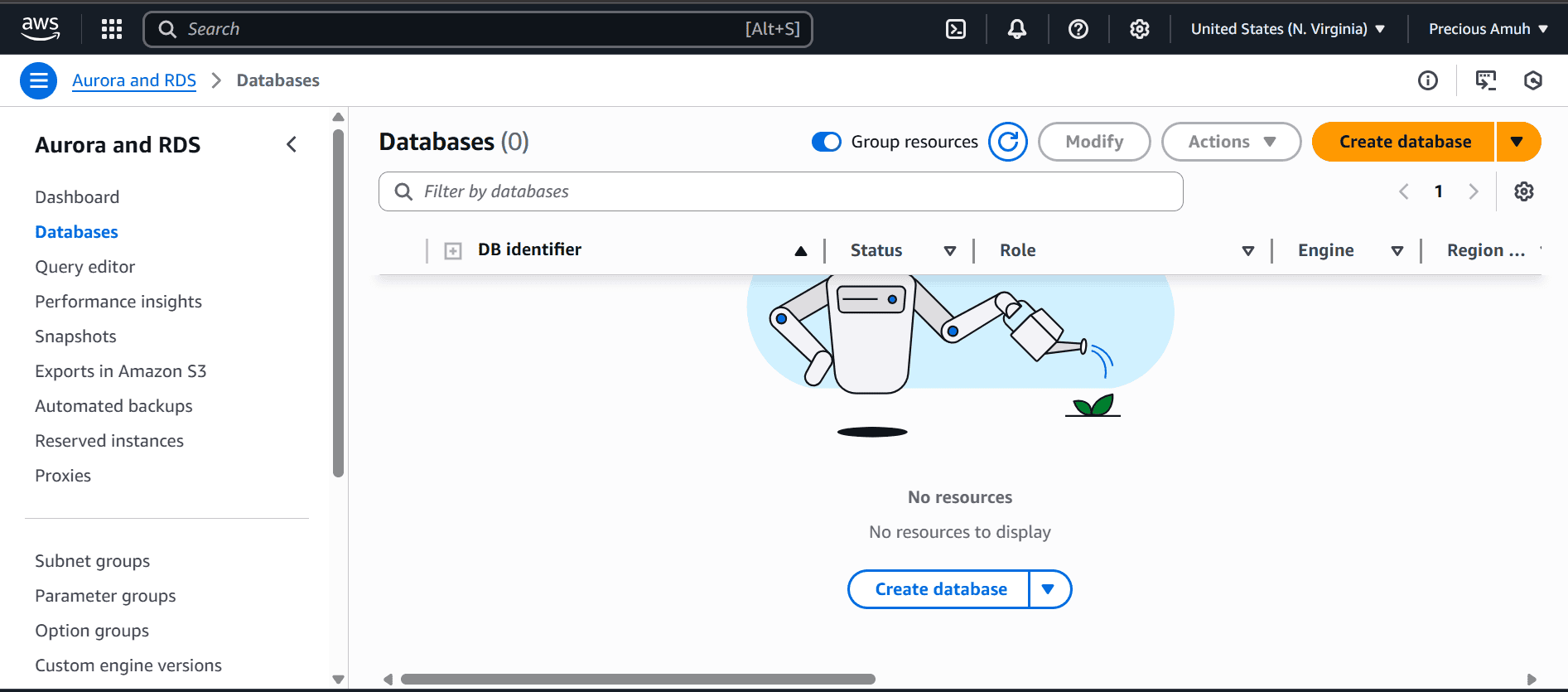
- Choose PostgreSQL as the database engine.
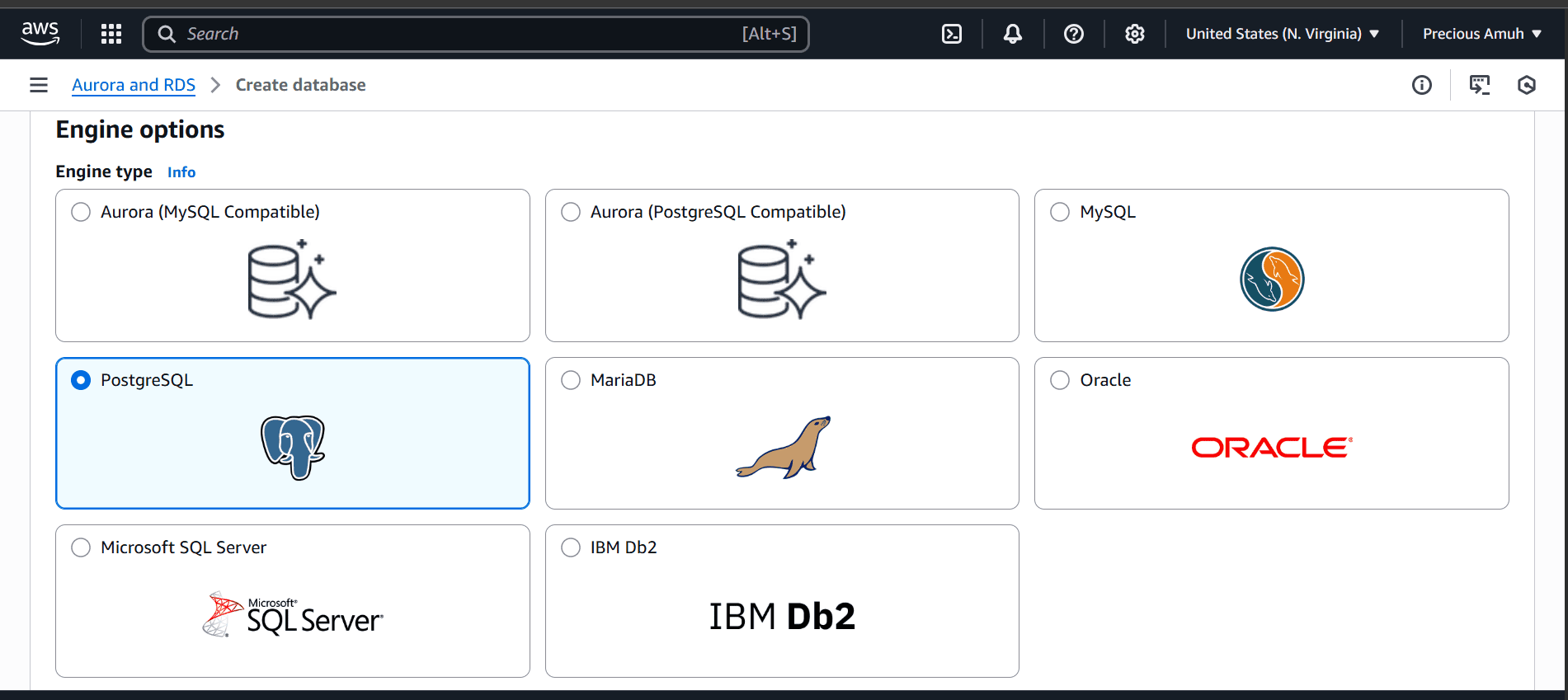
- Select "Standard Create" to customize options or "Easy Create" to use recommended configurations.
- Choose a sample template that meets your use case - production, dev/test, or free tier.
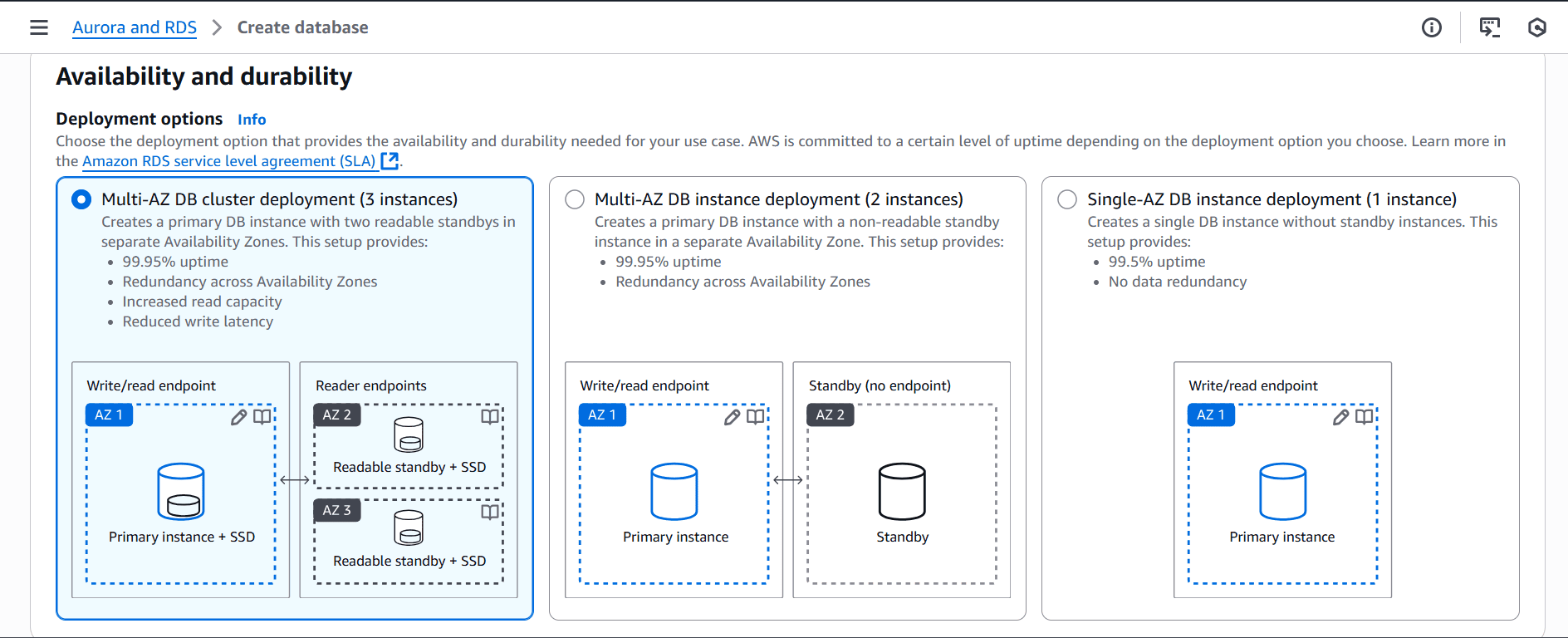
- Select the deployment option that provides the availability you need, instance size, and storage options.
- Set your database name, master username, and password.
- Choose your VPC and networking options.
- Enable public access if you need to connect from outside AWS.
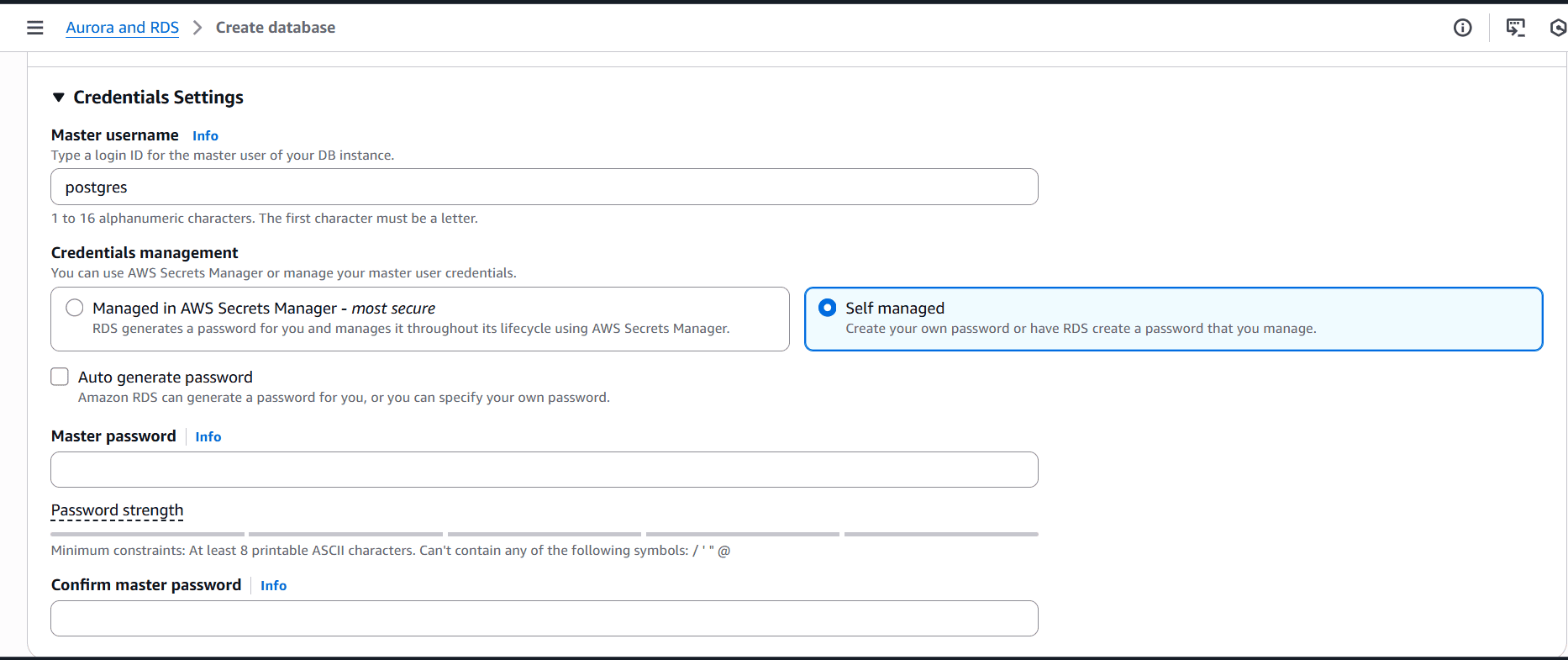
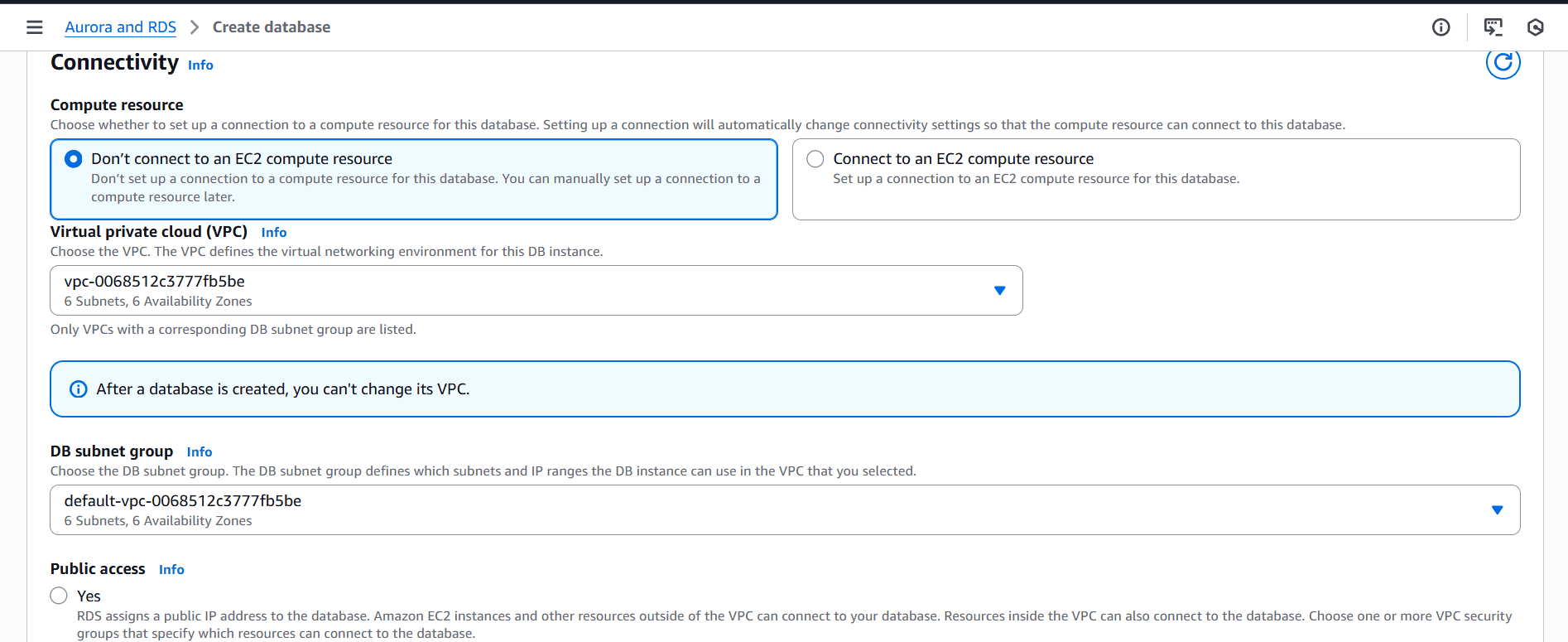
Review your configuration and click Create database to launch the instance. AWS will begin provisioning your database.
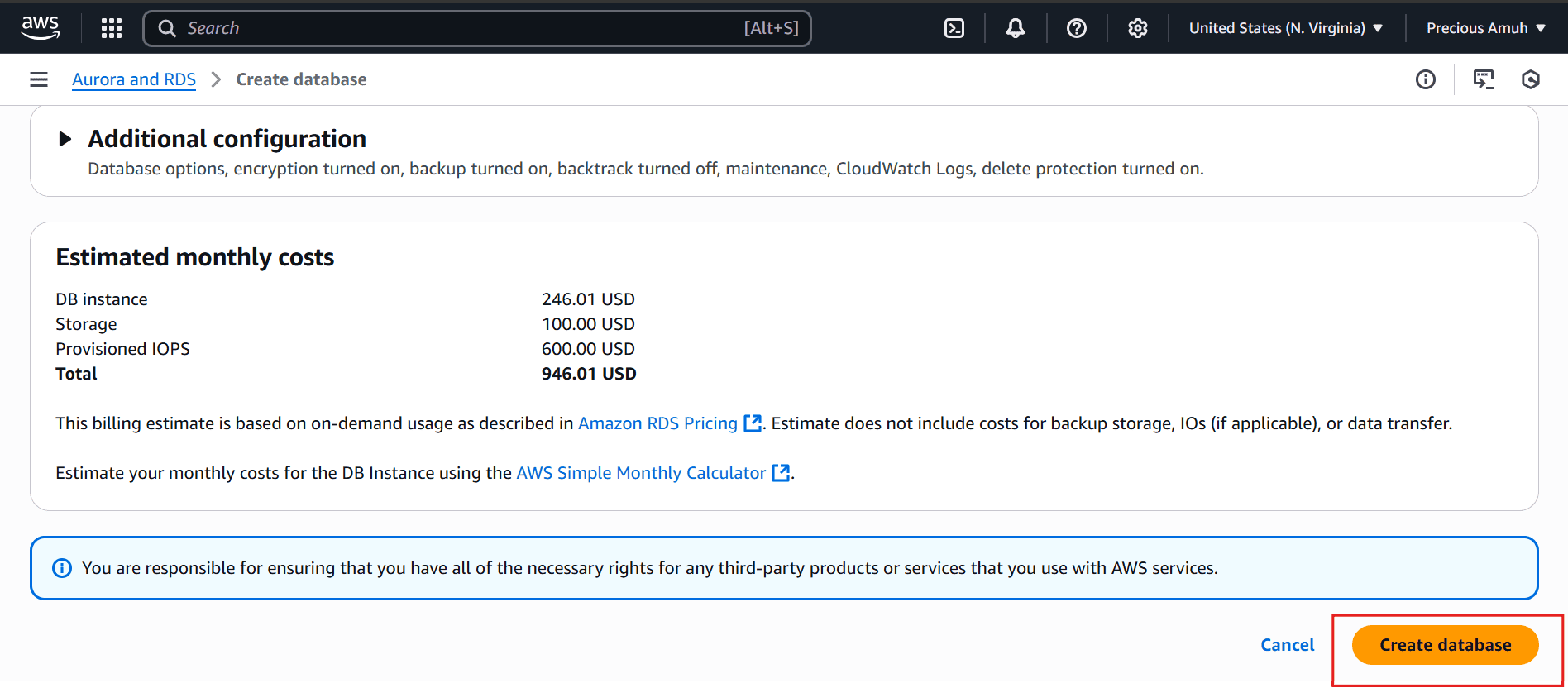
Once ready, use the endpoint provided in the console to connect using any PostgreSQL client tool or command-line interface.
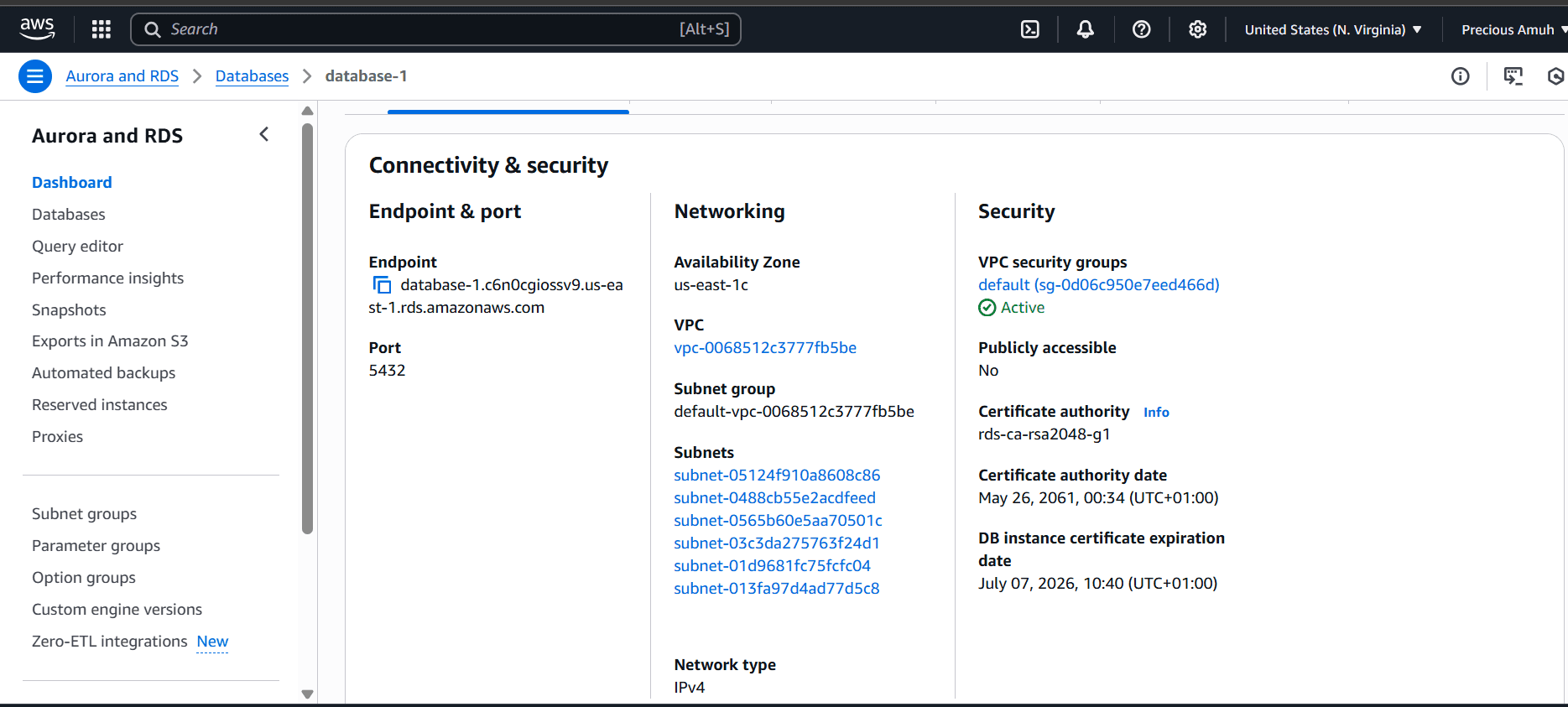
Deploying Postgres on PipeOps
PipeOps makes deploying Postgres even simpler, offering a seamless experience for developers and teams. Here’s how you can get your Postgres database up and running on PipeOps in minutes:
- Access Your Dashboard
- Choose the Postgres Add-On
- Set Up Your Database
- Deploy
Begin by logging in to your PipeOps account. Once you're in, look for the sidebar menu and click on "AddOns" to open the available services.
Search for "Postgres" and click on it. You’ll be taken to the Postgres details page, where you can explore the key information like resource requirements and how the service works. To begin deployment, hit the "Deploy App" button located at the top-right corner of the page.
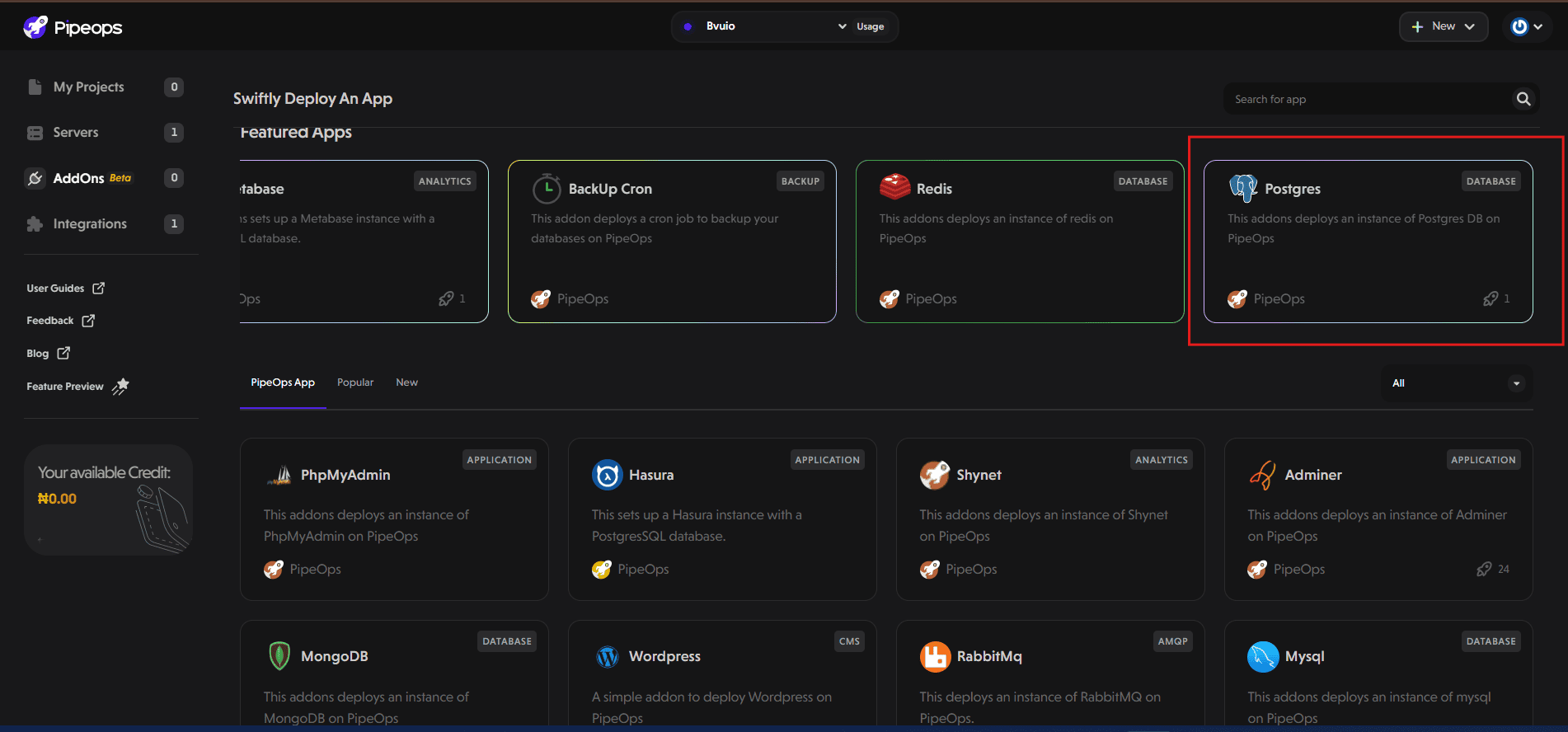
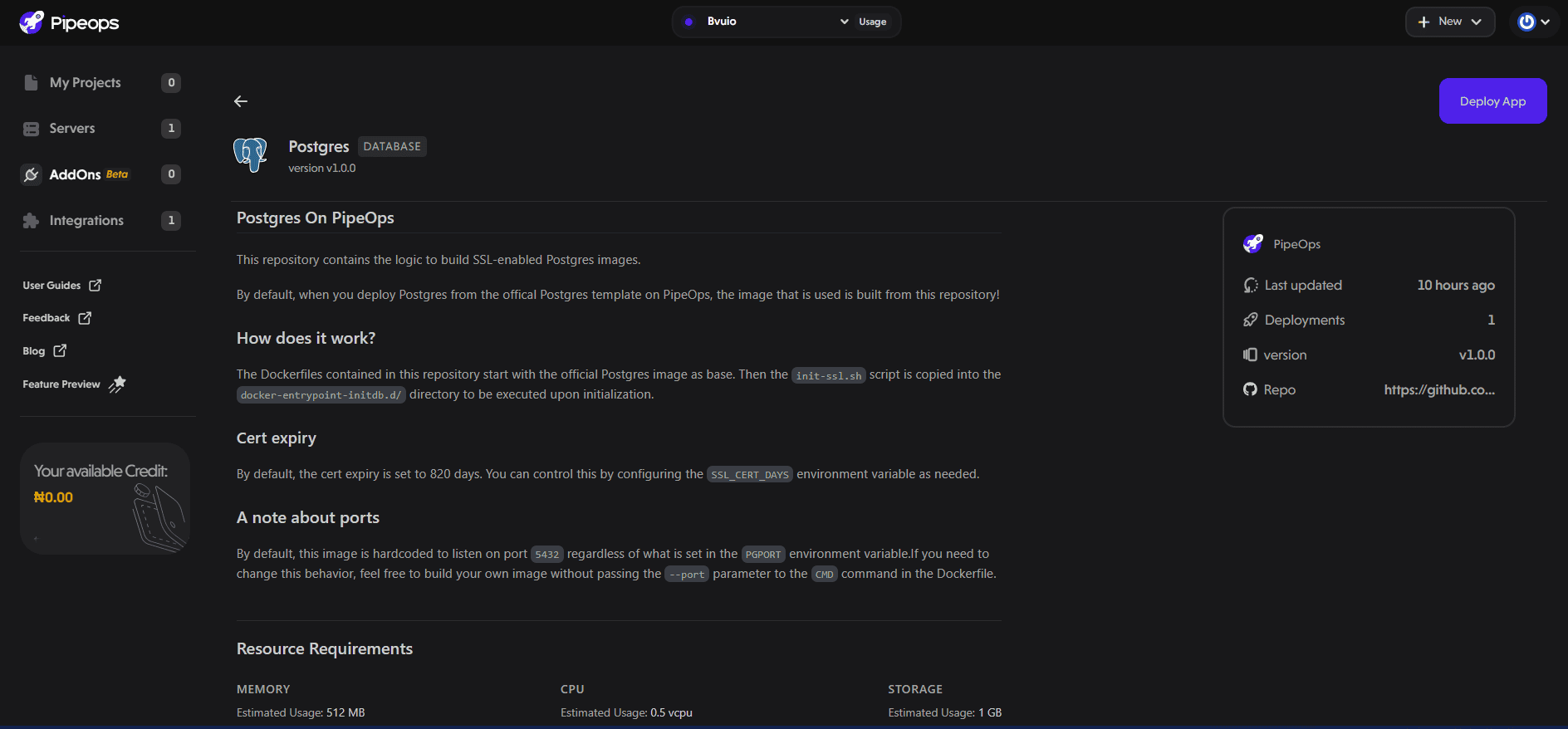
On the deployment setup page, you can select the server where your database should be hosted. Choose the same server as your application for internal communication to work. You can ajust the variables if needed, but defaults are preconfigured for Postgres.
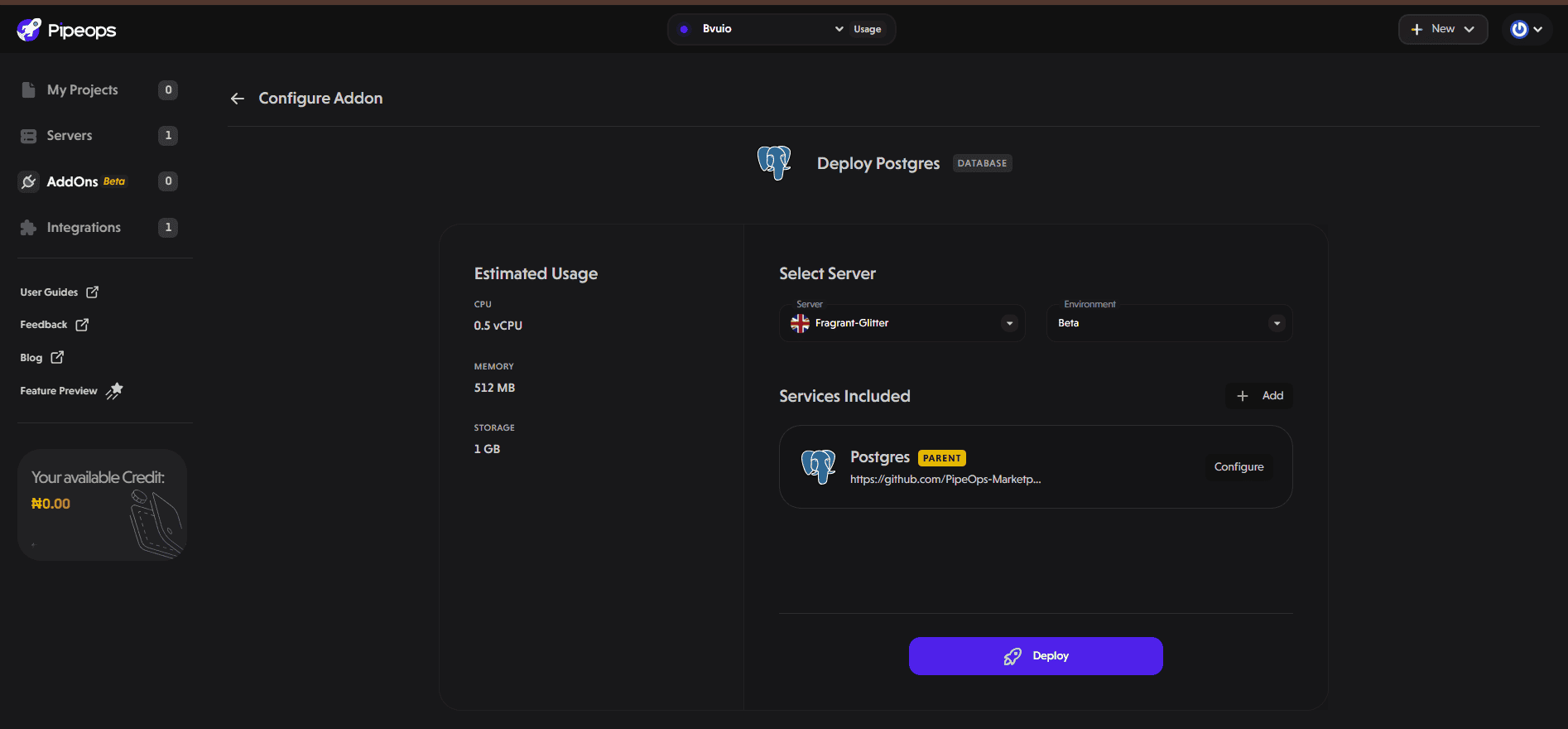
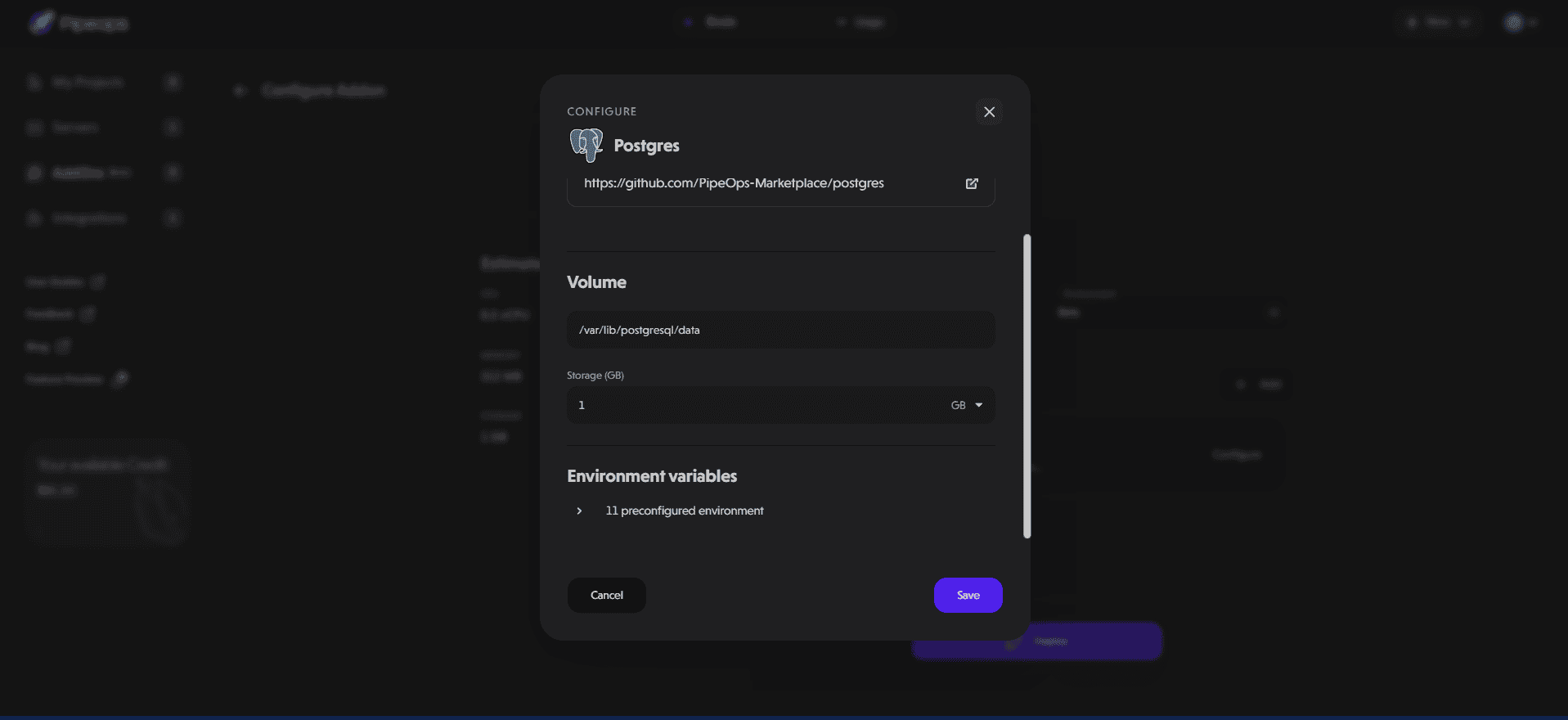
After you’ve finalized your settings, click the Deploy button to launch your Postgres instance. PipeOps will handle the provisioning process, which typically takes a few moments. Once the deployment is complete, your Postgres database will be live and ready to use on PipeOps.
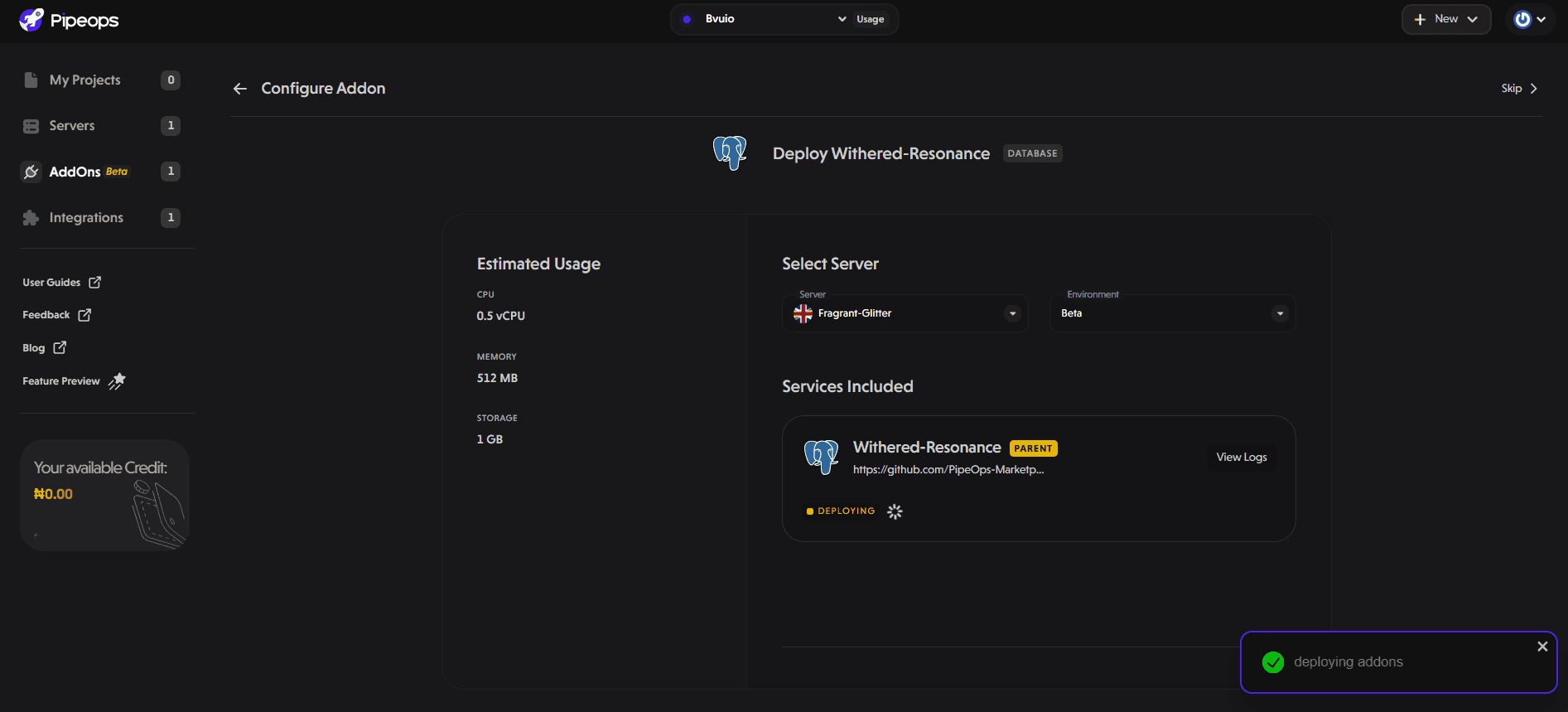
Retrieve Connection Details
Navigate to the Overview page of your Postgres instance by selecting it from your dashboard. Here, you'll find all the essential connection parameters: Username, Password, Database Name, and Host.
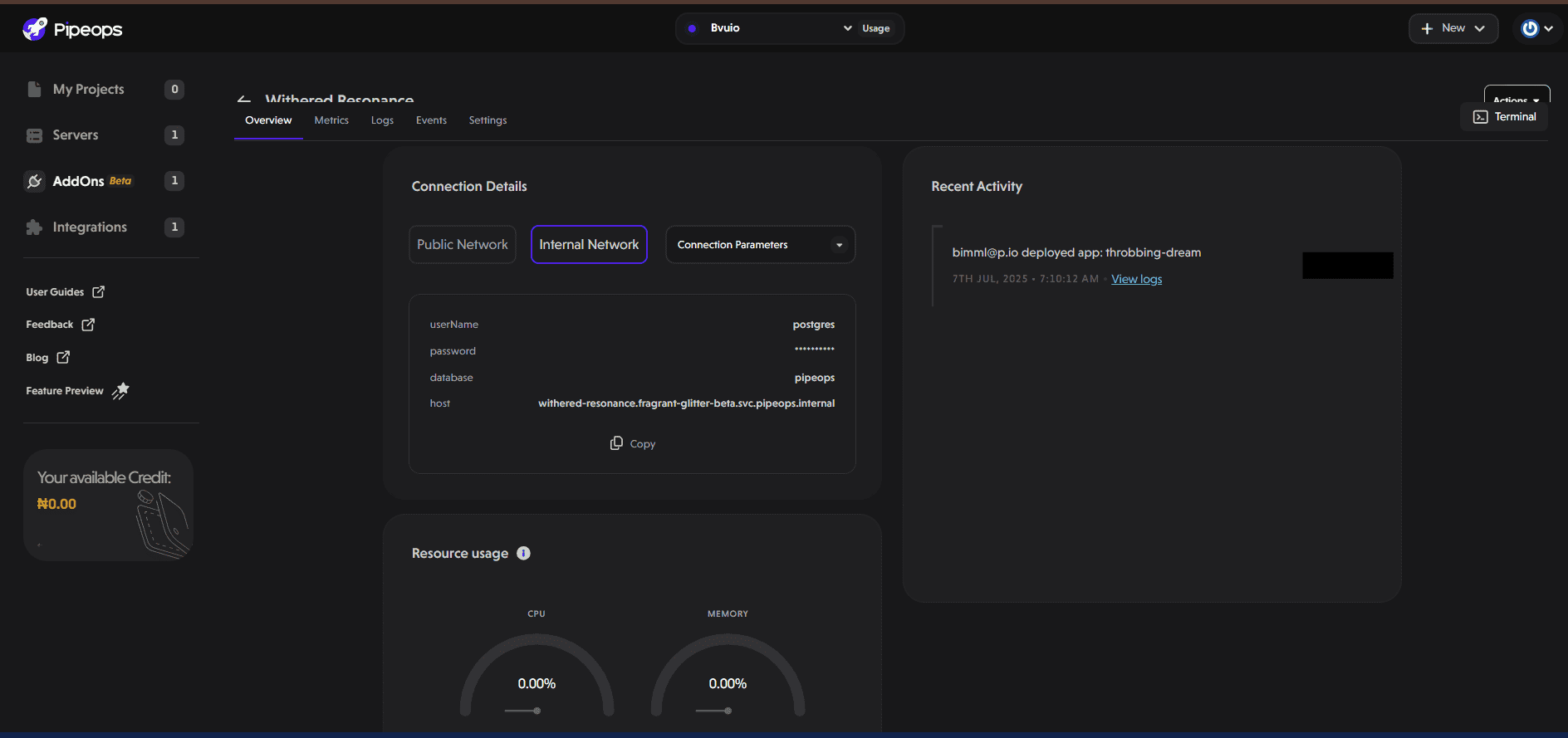
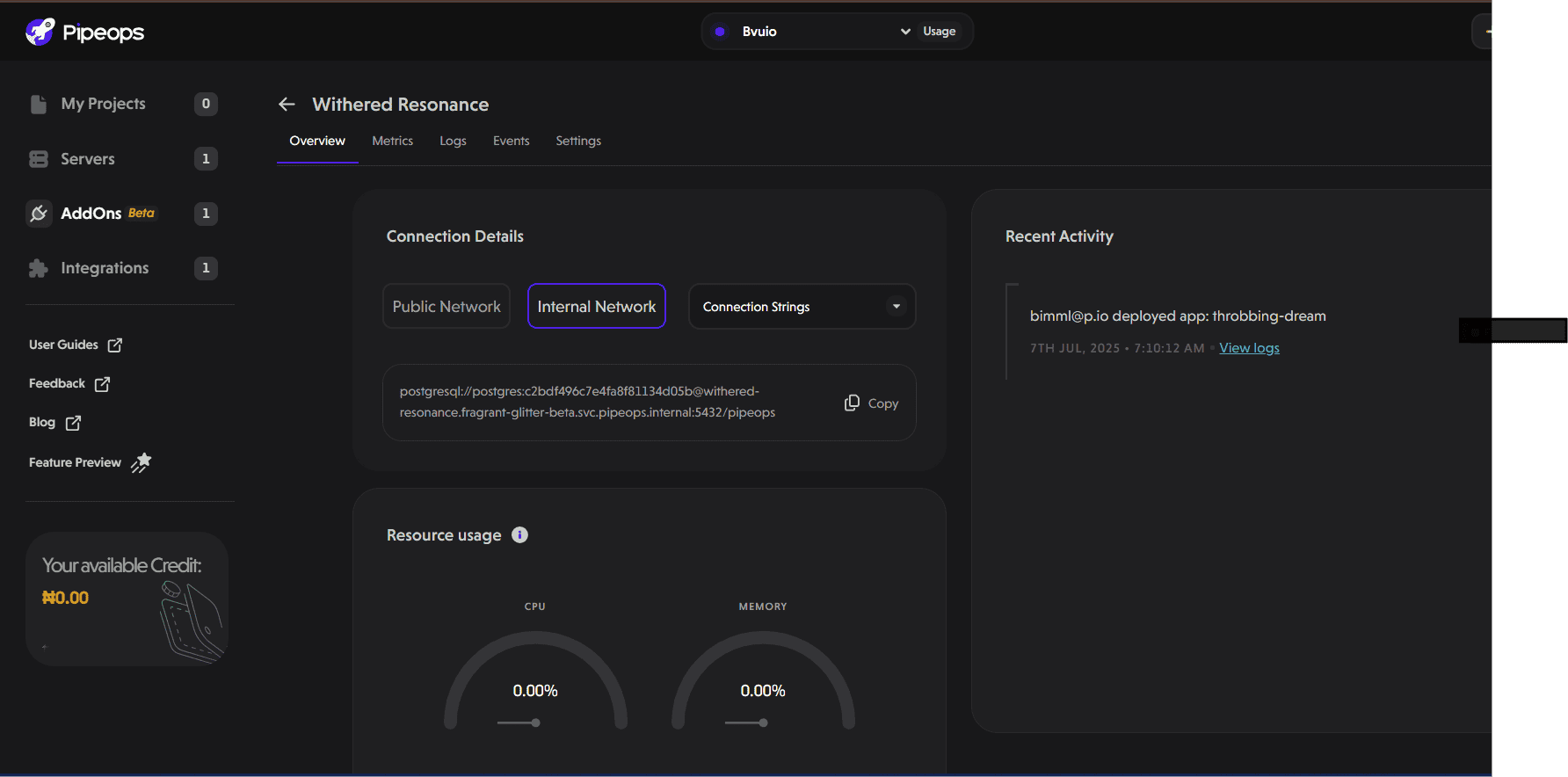
You can supply these individually to your workload if your application is configured to use separate parameters instead of a connection string. The Overview page also provides a full connection string, formatted as:
postgresql://[username:password@][host][:port]/[database]
Check out our detailed guide on how to communicate with databases deployed on PipeOps.
Conclusion
The stability and wide features Postgres offer make it a go-to database for developers building everything from side projects to production systems.
With tools like Amazon RDS, Azure Database for PostgreSQL, and platforms like PipeOps, you have more flexibility than ever to choose the setup that fits your workflow.
Regardless of where you deploy, Postgres offers a dependable foundation for building modern, data-driven applications.
Ready to get started? Set up your first Postgres database today and see why it continues to be the database of choice for reliability.